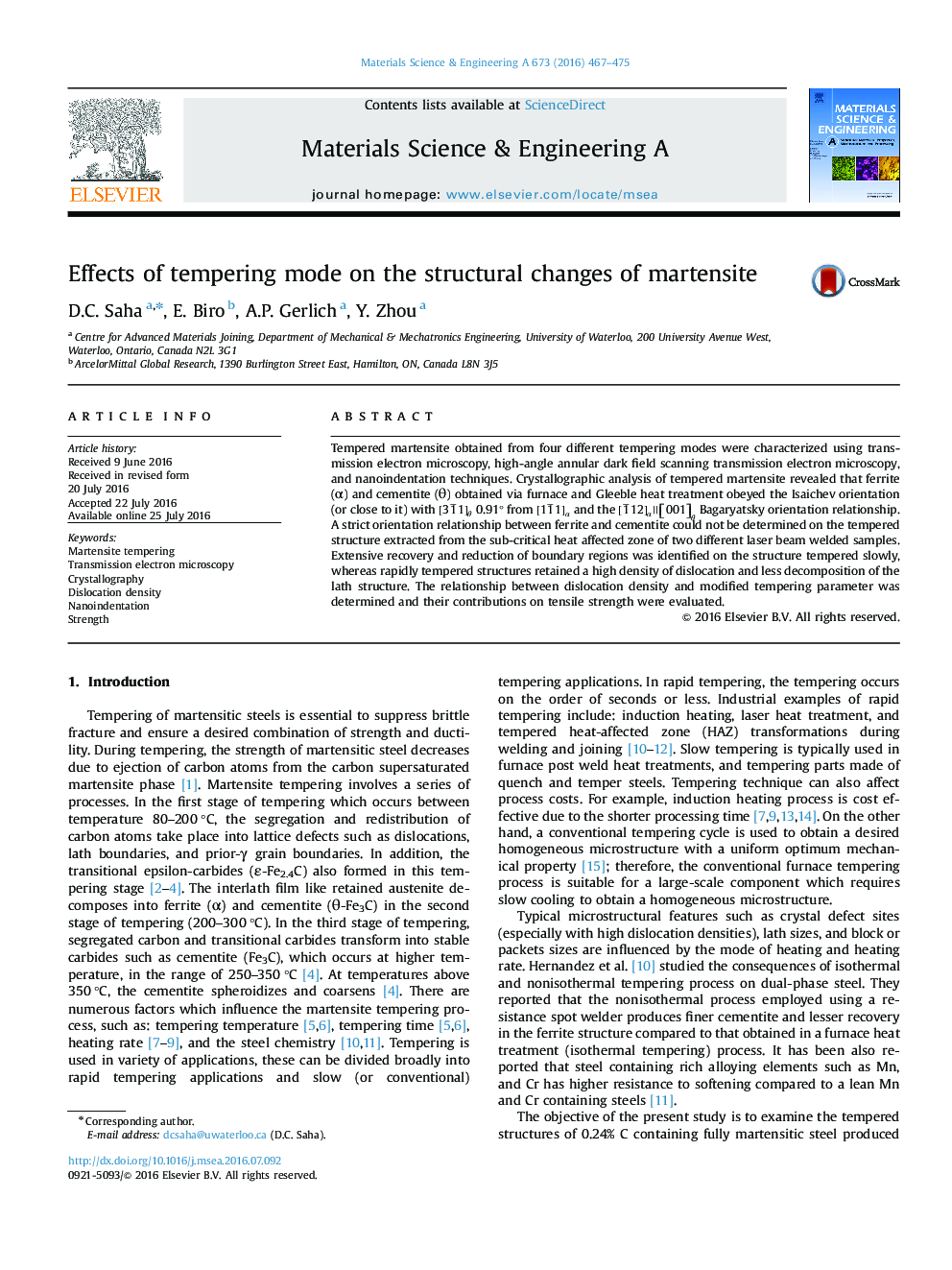| Article ID | Journal | Published Year | Pages | File Type |
|---|---|---|---|---|
| 1573157 | Materials Science and Engineering: A | 2016 | 9 Pages |
Abstract
Tempered martensite obtained from four different tempering modes were characterized using transmission electron microscopy, high-angle annular dark field scanning transmission electron microscopy, and nanoindentation techniques. Crystallographic analysis of tempered martensite revealed that ferrite (α) and cementite (θ) obtained via furnace and Gleeble heat treatment obeyed the Isaichev orientation (or close to it) with [31Ì
1]θ 0.91° from [11Ì
1]α and the [1Ì
12]α||[001]θ Bagaryatsky orientation relationship. A strict orientation relationship between ferrite and cementite could not be determined on the tempered structure extracted from the sub-critical heat affected zone of two different laser beam welded samples. Extensive recovery and reduction of boundary regions was identified on the structure tempered slowly, whereas rapidly tempered structures retained a high density of dislocation and less decomposition of the lath structure. The relationship between dislocation density and modified tempering parameter was determined and their contributions on tensile strength were evaluated.
Keywords
Related Topics
Physical Sciences and Engineering
Materials Science
Materials Science (General)
Authors
D.C. Saha, E. Biro, A.P. Gerlich, Y. Zhou,
